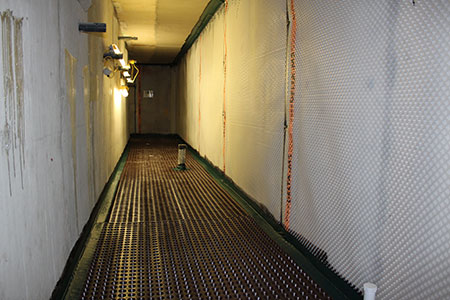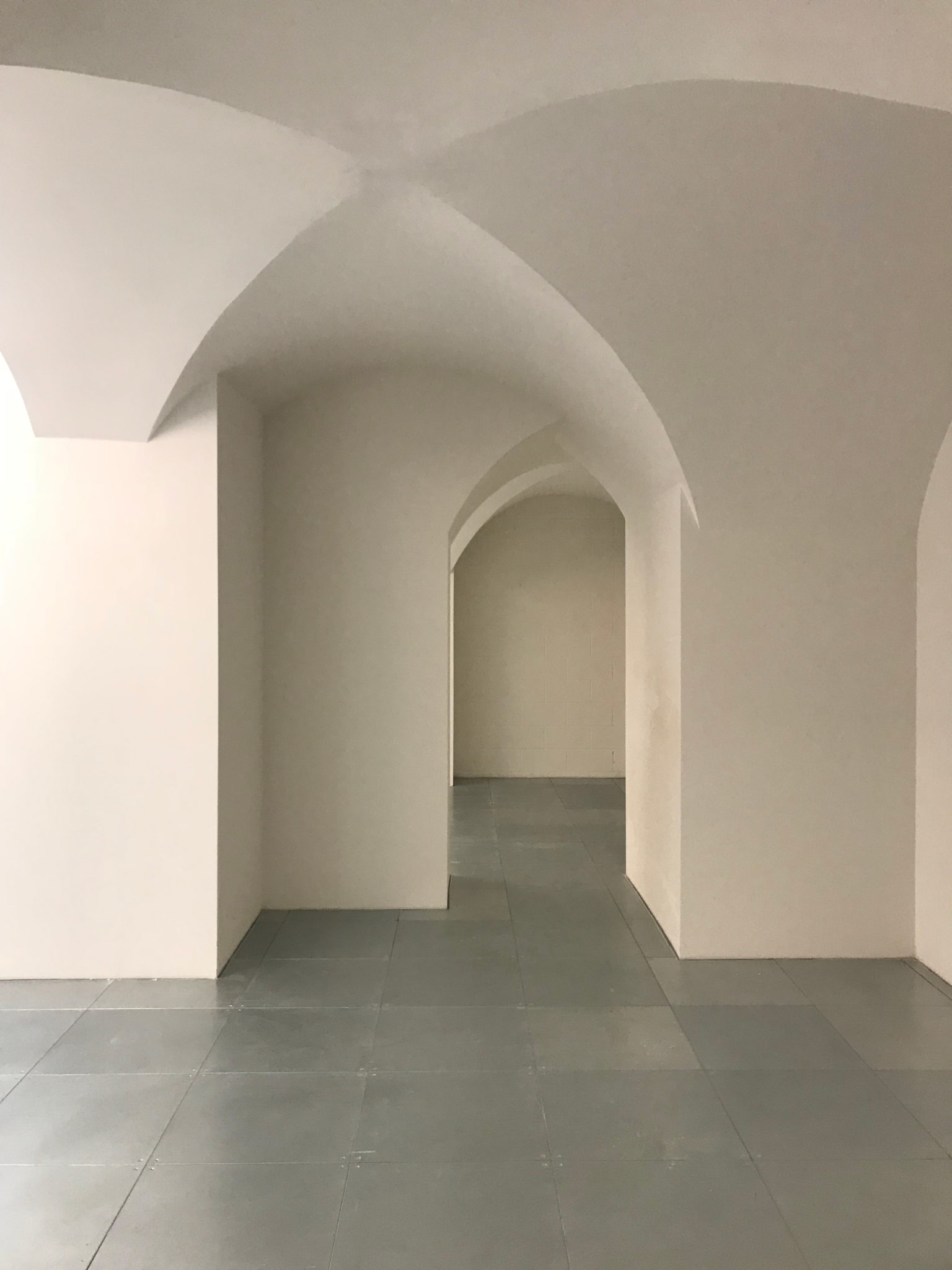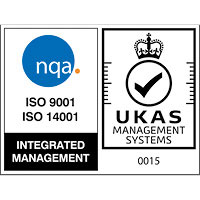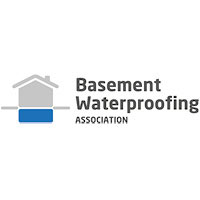Cavity Drainage
Cavity drain membranes work on the principal of allowing water to continue to penetrate the structure but control it in the air gap and divert it to a suitable drainage point or pump (if required). Cavity membranes do not allow pressure to build up against the internal construction, and the air gap behind the membrane allows the structure to ‘breathe’ and dry out. The membranes are impermeable to water, gas and water vapour, thus protecting the basement internal space from dampness. Membranes are loose laid on floors and fixed to walls using special plugs and sealing materials.
Cavity membranes can be fitted with little or no preparation to the substrate. Once fitted, wall surfaces can be dry lined or plastered directly, and floors can be screeded, or a suitable dry board system installed. This method of basement waterproofing allows decoration and floor finishes to be completed almost immediately, without long drying out periods.


Before a cavity drain membrane is laid or fitted on walls and floors constructed of new concrete, the concrete surface should be treated to reduce the risk of leaching of free lime and/or mineral salts and to avoid the obstruction of the drainage system.
For further advice and to arrange a site visit by one of our CSSW-certified Surveyors, please send us details of your requirement via our Contact Us page …




















